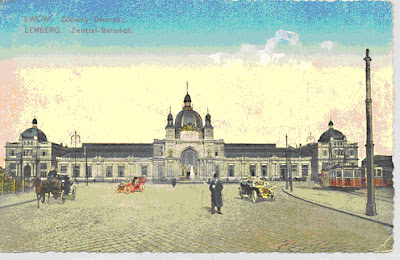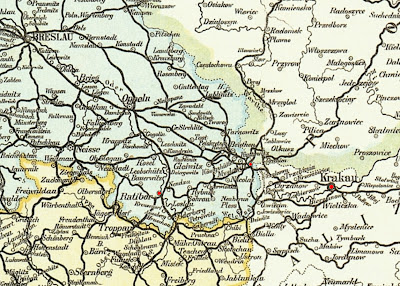In late 19th and early 20th century, the vast majority of European emigrants leaving the continent for America travelled through and departed from Germany Bremen , Germany , and the Hamburg-America Line, based in Hamburg , Germany
Immigrant stations, sponsored by the German shipping lines, were located at several locations along the German frontier. At these stations, immigrants would be processed for travel and board trains bound first for Berlin , Germany , and then either Bremen or Hamburg Russia , Poland , Austria-Hungary , the Baltic States , etc, could easily reach them. Stations included locations at Bajorham, Tilsit, Eydtkuhnen, Insterburg and Prostki along the Baltic frontier; Ilowo, Posen, Ostrow and Soslowice along the Polish-Russian frontier; and Myslowitz, Ratibor and Leipzig
Arriving at Brody , Austria-Hungary
After passing through Lemberg, the Ratzlaff party would have been bound for Krakow (
The railway station at Krakow :
At Krakow , the party would have needed to make a decision about which immigrant station they would use. At that time, stations were positioned along the Austro-Hungarian – German frontier at Myslowitz (Myslowice) and Ratibor (Racibor), as well as Leipzig Russia
Ratibor, on the other hand, was a little farther away and the train fare may have been a bit more expensive. Nevertheless, they would have safely avoided the Russian frontier by going to Ratibor. Unfortunately, documentation does not exist and we will probably never know of their exact route. Leipzig Russia Austria-Hungary and Germany
Railway station at Ratibor:






